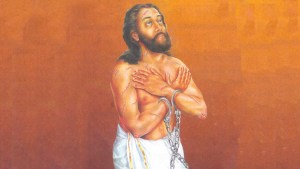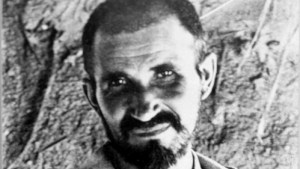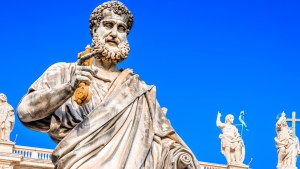After a hiatus of more than two years caused by the Covid-19 pandemic, the canonization Mass to be held this Sunday, May 15, 2022, in St. Peter’s Square will revive the tradition of grouped canonizations, usually held in May and October. Ten new saints will be proclaimed, including five Italians, one Indian, one Dutchman and three Frenchmen.
The last rite of canonization was on October 13, 2019: five new saints were proclaimed then, among them Cardinal John Henry Newman.
None of the faithful then gathered in St. Peter’s Square could have imagined that that would be the last public canonization before a long two-and-a-half-year hiatus.
The May 15 rite will be both exceptional in terms of the number of new saints – 10 in all – and ordinary, as it marks a return to a tradition usually undertaken twice a year, in the spring and fall, in order to encourage the widest possible presence of the people of God.
The rite of canonization itself is relatively sober and quick: it consists of the reading of the bull of canonization by the pope, in response to the petition formulated by the prefect of the Congregation for Saints’ Causes, currently Italian Cardinal Marcello Semeraro. After this “petition,” followed by the reading of short biographies of the new saints and the singing of the litany of saints, the pope binds the decree of canonization in Latin.
“This rite was simplified by Pope Francis,” says Don Rémi Bazin, a French priest of the Saint Martin Community and an official at the Congregation. “The request for canonization is now made only once, instead of three times as before,” he explains.
After this rite, the Mass follows its normal course, and the Pope’s homily usually focuses on the day’s readings rather than on the lives of the saints.
The canonization process is slow and complex
Contrary to what many people think, the list of new saints is not necessarily linked to a personal choice by the pope. Certainly, the authorization of the publication of the decrees falls under his magisterium, but beatifications and canonizations are the fruit of a very long process, which can take several decades or even centuries. In the case of Charles de Foucauld, the process began 95 years ago.
Of the 2,000 to 3,000 files currently being examined by the Congregation, “some will succeed, others will not,” acknowledges Fr. Bazin.
“A trial happens when a movement [of devotion] develops somewhere around a deceased person,” explains the French priest.
The 50-year waiting period after death was abolished by John Paul II, who reduced it to five years, in order to allow more contemporary figures to be raised to the altars. It is up to the bishop of the place of death of the person concerned to discern whether it is worthwhile to initiate a process, and then the procedure takes its course at the diocesan level. After that, the case goes to Rome. But the request to canonize never comes from the pope or the Vatican: the initiative always comes from the local communities, and the Congregation for Saints’ Causes only takes charge of the files after the conclusion of the investigation at the diocesan level.
The identification of a martyrdom in “hatred of the faith” or the “heroic virtues” of the person concerned, and then the recognition of miracles linked to his or her intercession, is a long and drawn-out process. This investigation involves historians, doctors, theologians, and of course, for the most contemporary cases, direct witnesses.
Some recent beatifications have involved the intimate circle of the new Blessed: the best known case is certainly that of Carlo Acutis, a young Italian who died in 2006 and was beatified in Assisi in 2020 in the presence of his parents.
The former Austrian resistance fighter Franz Jägerstatter, executed by the Nazis in 1943, was beatified in Linz in 2007 in the presence of his widow.
Since the pontificate of Benedict XVI, beatifications are usually celebrated by a papal envoy in the country of the new beatified person’s apostolate. This enables the local Church to participate, giving official recognition of their devotion.
The beatification of Charles de Foucauld, on November 13, 2005, was celebrated in St. Peter’s Basilica, but this was an exception as the organization of such a liturgy in Algeria would have posed too many practical and diplomatic difficulties. The Christian martyrs of the Algerian civil war of the 1990s, many of whom were inspired by Charles de Foucauld in their vocation, could for their part be beatified in Oran on December 8, 2018, the Feast of the Immaculate Conception.
Pope Francis, record holder for canonizations
Canonizations, on the other hand, remain almost systematically celebrated in Rome, apart from a few cases linked to papal trips, as was the case for the martyrs of Korea. They are usually celebrated in grouped ceremonies. However, Pope Francis chose an individual canonization for Mother Teresa in September 2016, given the notoriety of the founder of the Missionaries of Charity. In 2014, he chose to canonize John XXIII and John Paul II together, to mark a historical continuity between the popes. John Paul II had made the same choice in 2000 by beatifying Pius IX and John XXIII together.
During his pontificate, Pope Francis has presided over 11 canonization ceremonies in St. Peter’s Square and three others while traveling (Sri Lanka, United States, Portugal). In total, he has already canonized nearly 900 saints. However, this statistic is largely linked to a group canonization, that of the 813 martyrs of the Sack of Otranto, decided by his predecessor Benedict XVI.
Finally, it should be noted that Pope Francis has carried out several “equipollent” canonizations, by simple decree, without any liturgical celebration. This was the case in 2013 for the Italian mystic Angela of Foligno and for Peter Favre, a member of the first group of Jesuits with St. Ignatius of Loyola in the 16th century.
The “equipollent” procedure
With the “equipollent” canonization, the inscription of the saints is done by a simple decree of the pope without the regular process, which involves verification of a miracle. These saints “must have enjoyed a long and uninterrupted devotion, as well as a reputation for signs and graces.” Their canonization is requested by a large representation of the Church, directly to the pope.
Benedict XVI used the same recognition for St. Hildegard of Bingen, who is also recognized as a doctor of the Church.
Benedict XIV formalized this process in the 1700s. Through it, a pope invites the universal Church (as opposed to the local place where a saint might have been from, or a particular religious order he or she belonged to) to recognize the feast of the saint, with Mass and the Divine Office.
This recognizes that the Church’s judgment has been made on the person’s sanctity, even though the usual formula of canonization hasn’t been made.





